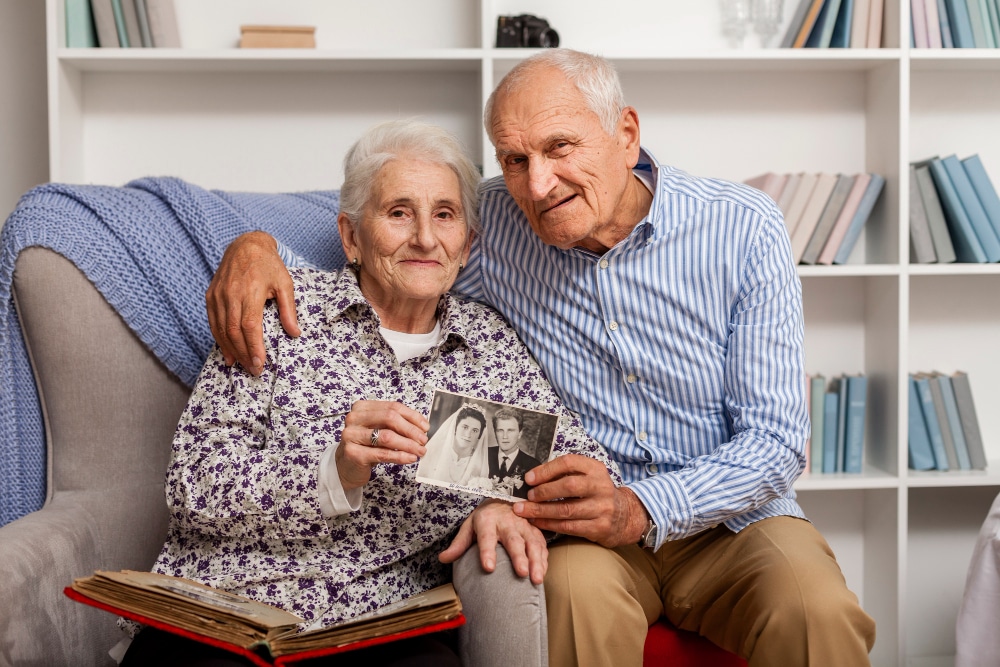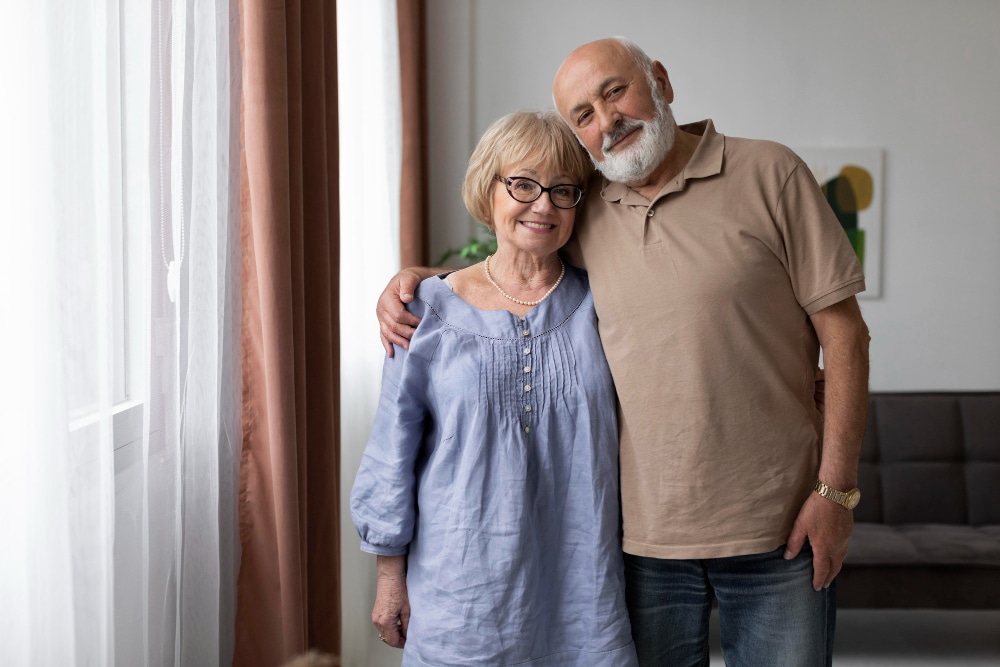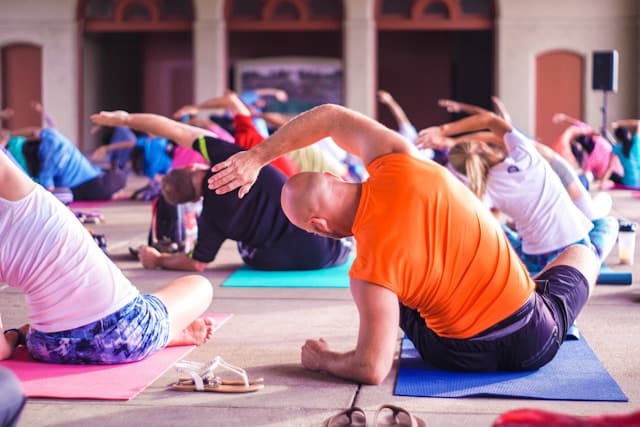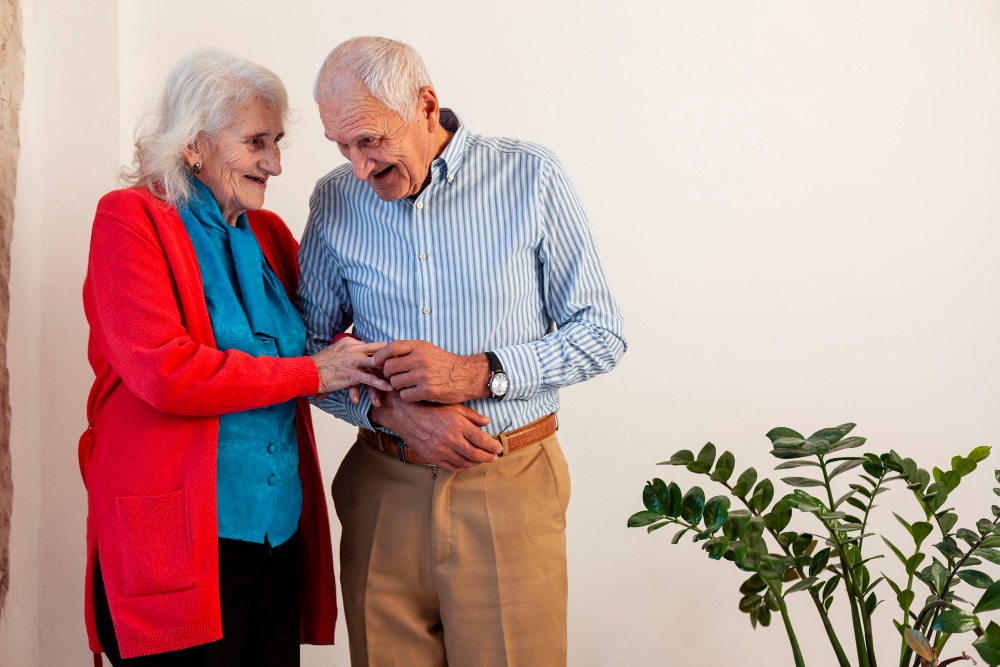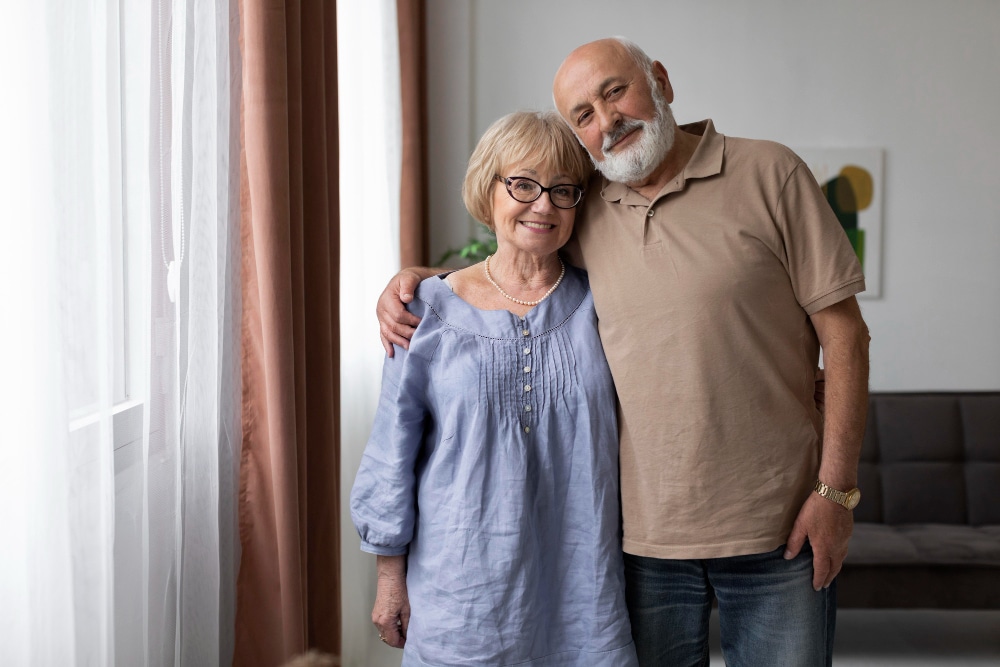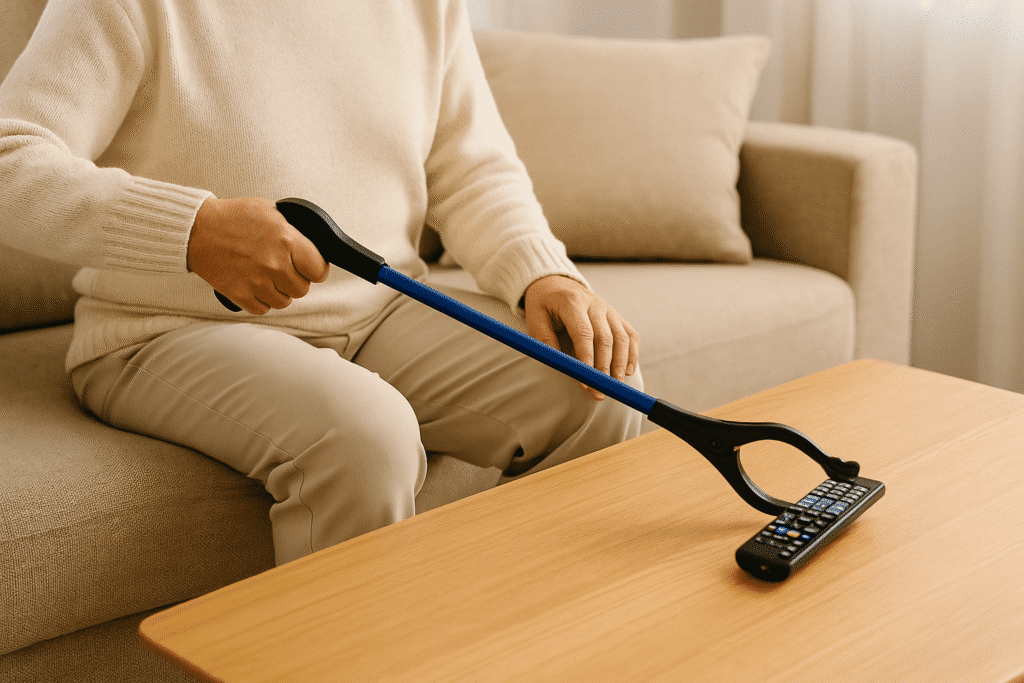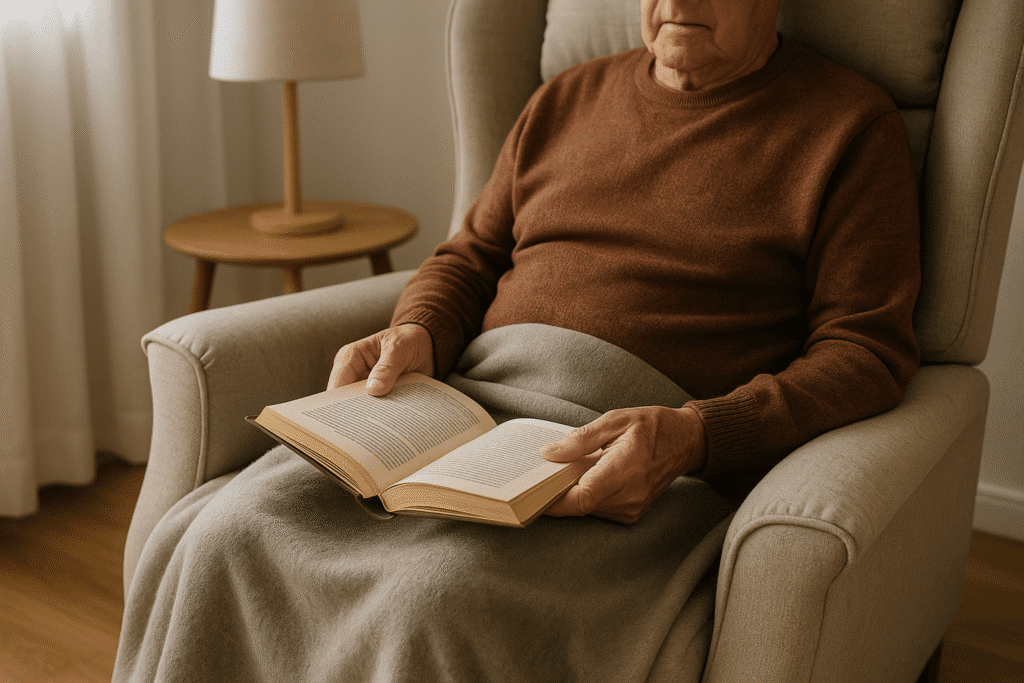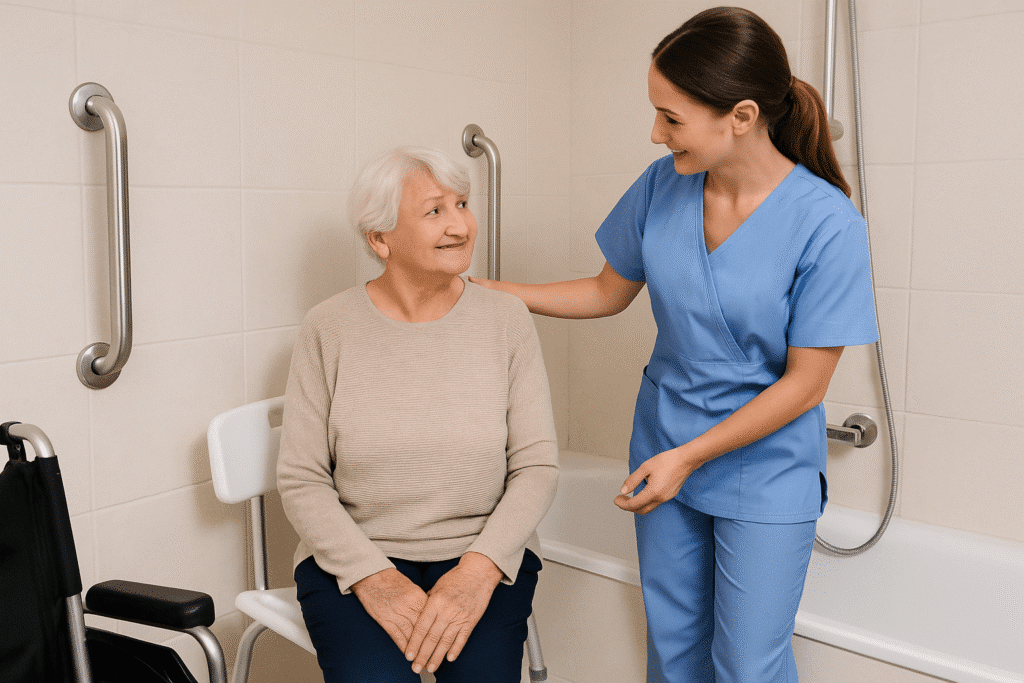Exercising at home may feel challenging when movement is limited, but even gentle activity makes a big difference.
Seniors with limited mobility can use simple chair exercises, light strength moves, and easy stretches to stay active without leaving home.
The goal isn’t pushing hard; it’s building confidence, keeping joints flexible, and making everyday tasks easier.
Key Summary:
Seniors with limited mobility can safely exercise at home by focusing on gentle, low-impact movements. Chair exercises, light strength training, stretching, and short bouts of cardio all help improve strength, balance, and circulation. With just 10–15 minutes a day, these routines make daily tasks easier, reduce stiffness, and boost overall independence and confidence.
Why Staying Active Matters Even with Limited Mobility
Regular, gentle exercise helps seniors with limited mobility stay independent by improving strength, balance, and joint comfort, while lifting mood and energy. Even 10 to 15 minutes a day can make standing, walking short distances, and household tasks feel easier.
- Strength supports independence: Stronger legs and arms make standing from a chair, carrying light items, and navigating a few steps easier.
- Balance lowers fall risk: Sit-to-stand practice and heel raises train stability, so moving around the home feels safer.
- Flexibility reduces stiffness: Short stretches for calves, hips, shoulders, and back improve the comfortable range of motion.
- Heart and circulation benefit: Seated marching, pedal exercisers, or short hallway walks support heart health and reduce fatigue.
- Mood, focus, and sleep improve: Small, steady activity can lift mood, sharpen focus, and support deeper sleep.
- Progress compounds over time: Adding 1 or 2 reps each week leads to real-world wins, like easier transfers or longer walks.
I’ve seen how keeping a simple “wins list” on the fridge, like noting when it felt easier to stand up or finish an extra set, can be surprisingly motivating.
What to Know Before You Start
Before beginning any routine, set yourself up for safety and success.
- Clear your space: Use a sturdy chair without wheels, wear non-slip shoes, and remove throw rugs or cords.
- Warm up first: Spend 3 minutes with gentle marching, shoulder rolls, and ankle pumps to prepare joints and muscles.
- Use the talk test: Movement should feel light to somewhat hard; you should be able to talk but not sing.
- Mind your posture: Sit tall or stand tall, keep shoulders relaxed, and breathe out on effort.
- Modify without pain: Shorten ranges, slow the tempo, or switch to a seated version if a move hurts.
- Watch red flags: Stop and contact a clinician for chest pain, severe shortness of breath, dizziness, or sharp joint pain that lingers.
- Consider medications and conditions: If you manage heart disease, blood pressure, diabetes, osteoporosis, or have had recent surgery, ask your clinician which moves to avoid.
- Hydrate and rest: Keep water nearby and take breaks between sets so form stays solid.
- Track tiny wins: Write down today’s reps and how you felt. Over time, adding just 1 or 2 reps makes a big difference.
Best Types of Exercises for Seniors with Limited Mobility
Even with restricted movement, you can build strength, improve flexibility, and boost circulation through safe, low-impact routines. The best options are simple, can be done at home, and require little or no equipment.
1. Chair Exercises
Chair exercises are among the safest and most effective ways for seniors with limited mobility to stay active. They provide stability, reduce fall risk, and can be adapted to nearly any fitness level. A sturdy, armless chair on a flat surface works best.
Seated Marching
This exercise improves circulation, strengthens legs, and warms up the body.
- Sit tall with both feet flat on the floor.
- Lift one knee as if marching, lower, then switch sides.
- Keep a steady rhythm for 30–60 seconds.
Leg Extensions
Helps strengthen the thighs and support the knees.
- Sit with back against the chair and feet flat.
- Straighten one leg out, keeping toes pointed up.
- Hold for 2–3 seconds, then slowly lower.
- Repeat on the other side.
Chair Squats
Builds lower-body strength and makes standing up easier.
- Sit on the edge of a sturdy chair, feet shoulder-width apart.
- Push through your heels and stand up slowly.
- Lower back down with control, using the chair for support if needed.
- Repeat for 6–10 reps.
Arm Circles & Shoulder Rolls
Loosens shoulder joints and improves posture.
- Sit upright, arms extended to the sides at shoulder height.
- Make small circles forward for 10–15 seconds, then reverse.
- For shoulder rolls, lift shoulders up, back, and down in a slow circular motion.
Wrist & Ankle Rolls
Encourages blood flow to hands and feet, which helps reduce stiffness.
- Sit tall and extend one arm forward. Rotate the wrist in circles, 10 each way.
- Lift one foot slightly and rotate the ankle clockwise and counterclockwise.
- Switch to the other wrist and ankle.
2. Strength Training for Seniors
Strength training helps preserve muscle, maintain bone density, and make daily activities easier. It can be done with light weights, resistance bands, or even household items like soup cans.
How to do it:
- Choose light resistance (1–3 lb weights or bands).
- Sit or stand tall, keeping core engaged.
- Perform exercises slowly: lift for 2 seconds, lower for 3 seconds.
- Start with 8–10 repetitions and increase gradually.
Common moves:
- Bicep curls (arms by sides, bend elbows to lift weights)
- Overhead press (weights at shoulder height, press upward slowly)
- Seated rows (resistance band looped around feet, pull back as if rowing)
3. Flexibility and Stretching
Gentle stretching helps maintain range of motion, reduce stiffness, and ease joint pain. Even 5 minutes of stretching after exercise can make movement easier throughout the day.
Examples:
- Neck tilt: Bring ear toward shoulder, hold for 10–20 seconds each side.
- Chest opener: Clasp hands behind your back or hold a towel, gently stretch shoulders back.
- Seated hamstring stretch: Extend one leg forward with heel on the floor, lean forward slightly until you feel a stretch.
4. Low-Impact Cardio Options
Cardio helps the heart, lungs, and circulation while improving energy levels. For seniors with limited mobility, the focus is on safe, joint-friendly activities.
Examples:
- Seated aerobics: March in place, swing arms, or combine both for 1–2 minutes.
- Walking indoors: Short hallway laps or walking around the living room with support if needed.
- Pedal exerciser: Place under a chair to pedal with legs, or on a table to use with arms.
- Water aerobics (if available): The buoyancy of water supports joints, making it easier to move freely.
How to Exercise at Home for Seniors with Limited Mobility
A simple 15-minute daily routine is enough to improve strength, circulation, and flexibility. Here’s an easy structure to follow:
Warm-Up (3 minutes)
- March in place while seated, lifting knees gently.
- Add arm swings or shoulder rolls to loosen upper body.
Strength (6 minutes)
- Seated leg extensions: 2 sets of 8–10 reps per leg.
- Bicep curls with light weights or bottles: 2 sets of 8–10 reps.
- Sit-to-stand from chair: 1 set of 6–8 reps, using support as needed.
Cardio (3 minutes)
- March in place faster, or use a pedal exerciser if available.
- Keep a steady pace while maintaining posture and breathing.
Flexibility & Cool Down (3 minutes)
- Neck tilts side to side, hold 10 seconds each.
- Seated hamstring stretch, hold 10–15 seconds per leg.
- Shoulder rolls, slow and controlled.
Aim for this short routine 3–5 days a week. With consistency, daily tasks like standing up or walking across the room will feel noticeably easier within a few weeks.
How Caregivers Can Support Seniors During Exercise
Caregivers play a key role in helping seniors with limited mobility stay active and safe. The most important support is creating a safe environment. Clearing clutter, securing a sturdy chair, and keeping water close by reduces risks and makes the session more comfortable.
Encouragement is equally valuable. Many seniors hesitate to exercise out of fear of pain or falling. Caregivers can provide reassurance, celebrate small wins, and remind them that even a few minutes of movement counts as progress.
Motivation is often the difference between starting and skipping.
Caregivers can also assist with form. By standing nearby or offering a steady hand, they help seniors maintain good posture and balance without taking over the movement. Gentle reminders about breathing and moving slowly go a long way toward preventing injury.
Finally, monitoring is essential. Watching for signs of fatigue, pain, or dizziness allows caregivers to step in early and suggest a rest or modification. This kind of attentive support ensures exercise remains safe, enjoyable, and consistent over time.
Benefits You’ll Notice with Consistent Exercise
With steady practice, even a few minutes of movement each day can bring real improvements that you’ll feel in everyday life.
- Stronger muscles: Standing up, carrying light items, and moving around the home becomes easier.
- Better balance: Gentle chair or supported exercises help lower the risk of falls.
- Less stiffness: Regular stretching and movement keep joints looser and more comfortable.
- Improved heart health: Light cardio supports circulation, lowers fatigue, and boosts energy.
- Sharper mood and sleep: Exercise releases endorphins, which lift mood, reduce stress, and support better rest.
- More confidence: Small daily wins build trust in your body and encourage independence.
Final Words
Exercising at home with limited mobility does not require special equipment or long sessions, just consistency and simple movements.
Chair exercises, light strength training, stretching, and gentle cardio can improve strength, balance, and overall well-being.
By starting slowly, staying safe, and celebrating small progress, seniors can enjoy greater independence and comfort in daily life.
FAQs
How often should seniors with limited mobility exercise?
Most seniors benefit from 3–5 sessions per week, even if each session is just 10 to 15 minutes. Shorter, more frequent routines are often easier to maintain than longer workouts.
What if I can’t stand?
You can still exercise effectively from a seated position. Chair exercises such as seated marching, leg extensions, and arm circles provide strength, circulation, and flexibility benefits without needing to stand.
Can I still exercise if I use a walker or wheelchair?
Yes, many routines can be adapted. Wheelchair users can focus on seated strength, stretching, and cardio with arm or pedal machines, while walkers provide added safety for light standing or walking exercises.
How soon will I see results?
Many people notice improvements in energy, flexibility, or ease of daily tasks within 2 to 4 weeks. Greater strength and balance come with steady practice over a few months.
Mark has over 10 years of hands-on experience in senior care. He founded ElderSavvy to provide honest, easy-to-follow advice on tools that support comfort, safety, and independence. Mark oversees all content and product reviews, guided by insights from caregivers, health professionals, and real-life use.

